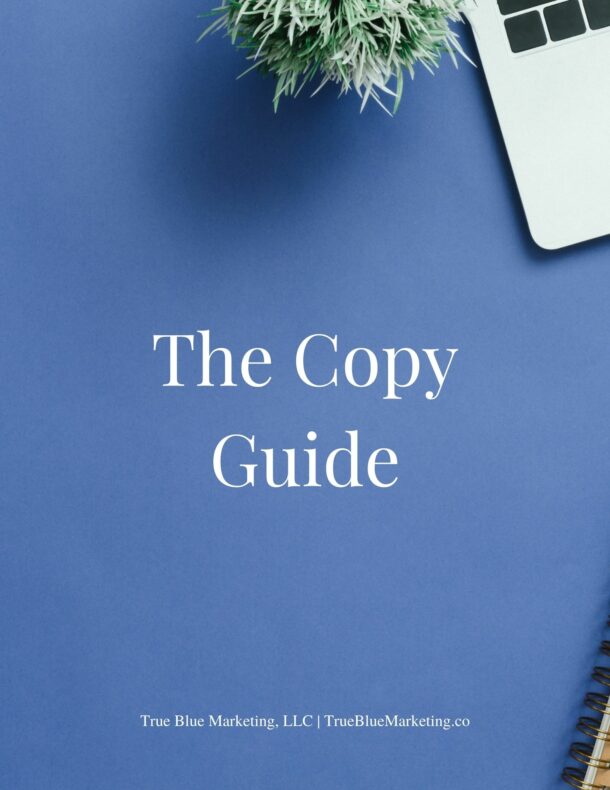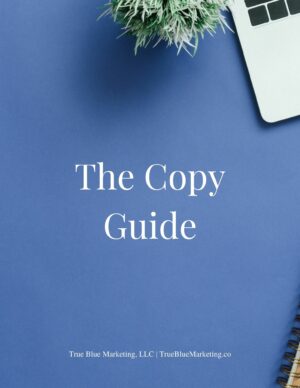Small business websites need a lot of copy. From an engaging home page to a killer sales page and the soft sales page that is a successful about page and more, a website that works for your business takes a lot of thought and writing.
With this mountain of copy that needs to be created for your website, and before your website launches, where do you start? In this post, I share how I guide small businesses through the copy creation process so they know their copy works for their specific ideal clients AND they have copy that helps them start to market their business as soon as possible.
The process of creating website copy that truly fits your business starts with creating a solid introduction for your business. It can be done in a few sentences with what many business people call an elevator pitch. My streamlined version is an opening statement.
A few simple sentences may seem like a quick task that can be easily checked off your business-building to-do list. You may wonder “hard can it be to create a few sentences?”. The answer depends on how well you want that set of sentences to work for your business. If you want your opening statement to take up a serious amount of time every time you share it, then carry on with your three paragraphs of introduction (as some marketing gurus suggest). If you’ve tried their recommendations only to find that your listeners stop listening before you’re done with that lengthy introduction, then the opening statement may be a better fit for you.
Here is how to get started on the few simple sentences that become your opening statement.
Short Copy Does Not Equal Quick Creation
First off, in the world of creating copy, the shorter the item the more thought you’ll need to put into every word. Each one will need to do the heavy lifting to get your point across, even conjunctions like “and” take up space in this type of copy. Your opening statement will need to cover what you do for work, who you help on your best days, and the incredible results your clients get from working with you. It will also need to articulate every idea with the words your ideal clients use to convey their meaning. Oh, and do all of this in a minute or two.
As you can see, every word counts in copy that is as short as your opening statement. The bulk of time you’ll devote to creating this type of copy will be to researching the meaning intended by your ideal clients and the specific words they use to share that meaning.
Start with Your Ideal Clients
To get to that language of your ideal clients you’ll need to identify your ideal client avatar (ICA). This exercise is all over the place in marketing and, in my opinion, it has been so overdone that it often becomes a waste of time.
Instead of following the traditional ICA plan of writing every detail of your ideal client down to their shoe size, the brand of car they drive, and how many children in their family, write down only the details that apply to the work you do with them. This turns the traditional ICA plan on its head so it only focuses on the “must-haves” of your ideal client. If your ideal clients always need help with a specific problem, then having that problem is part of how they qualify as your ideal client.
If you want to dive deep into this one to get the answers that apply to your work, check out this ICA post.
Opening Doors for You and Your Business
A well-crafted opening statement will open doors for your work, engaging prospects and their network at the same time by keying into the specific language of your ideal clients. If that sounds like a lot of work for a few sentences, I agree! How will your opening statement accomplish all of that? By including the words that they use to articulate who they are, what they need for help, and the results they want from that work. Your opening statement will sound like what they say and what they think. It will feel to them like you are the one expert who sees them, hears their plight, and can lead them out of it.
That’s because you are the expert for them – they’re your ideal clients, after all. Your work is specifically for them. It turns the idea of working with you into something they know they need to do, even if it takes a while to get a spot on your calendar.
How About Broad Terms?
Good question. Broad terms can target a larger set of needs, right? It may seem like going broad with your wording can cast a broader net when you’re fishing for prospects. However, going too broad with terms can lessen the impact of your opening statement.
(If you’d like more information on this, check out my post Can I Market to Everyone?)
Let’s see how getting specific might work to help you open doors to your new ideal clients.
Let’s Get Specific
Imagine you work only with teachers who are in the first decade of their careers, helping them better manage their classrooms. To break down this quick statement, that description is a:
- Specific group – teachers
- Who are at a specific time in their career – the first decade of teaching
- With a problem – real-life classroom management
- That you help with – actionable steps to de-escalate common behavior problems while regulating their own emotions
How appealing would it be to introduce yourself to your ideal client simply as a “coach for teachers”? It might inspire them to ask more about who you work with but more likely, they won’t think you’re the expert in their specific needs. What if, instead, you share that you help teachers in the first decade of their careers practice actionable de-escalation tactics to silence behavior challenges before it breaks your concentration and disrupts learning across the classroom?
Rather than start a question-and-answer session that requires initiative from the other person, you’re ready to talk about how you could help this struggling person have a lower-stress daily life. You could skip the questions and get right to talking about what you love to do and what your ideal clients need for help.
Your effective opening statement can increase your chances of a connection with this ideal client from the very start because it covers the information they need to hear from you to know that you are the expert they want.
Talking Copy
After you’ve pulled together your opening statement with your “must-have” information it is time to share that copy! Saying it out loud and in real-time whenever you are asked what you do will give you instant feedback. As you share your opening statement, notice the feedback you get from your audience. Do they:
- Know what you do?
- Know who you help?
- Ask additional questions to clarify who you work with
- Ask about the specific results you get for them?
- Offer a name of someone who could use your help?
If your copy doesn’t start to open doors for you in your first ten conversations, I suggest revising it. Revisit the words of your ideal clients to see if your copy is off, then update your opening statement and try it out again. Continue this process until you find copy that works for you and your business by attracting new ideal clients.
Looking for more information on how to write your website copy? Check out The Copy Guide.






